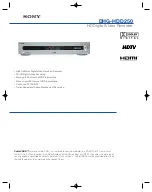
Configuration
26
DST Settings
tab
Setting
Auto DST
Adjustment
If the box is ticked, the device
switches automatically to daylight
saving time.
Enable DST
If the box is ticked, a specific start/end
date can be selected.
From/to
Start/end date for daylight saving time.
DST Bias
Daylight Saving Time bias: correction
of daylight saving time to reference
time.
More settings Settings
Name
Unique specification of the device.
No
Used for unique identification when
using CMS software.
CVBS Output
Brightness
Slider (left = lower brightness, right =
higher brightness).
Auto. log off
Never/1
–30 minutes: controls how
long the menu is displayed before it is
hidden again.
Menu Output
Mode
Use to specify the monitor output for
the menu display. If set to auto, the
recorder will detect the output.
Confirm the settings by clicking on
Apply
and exit the
menu by clicking on
OK.
Network configuration
General
It is essential that the network settings are correct if you
want to control the device and monitor remotely via
your browser.
Note
Please read the following general instructions
before setting up the device.
A network is the connection of at least two network-
compatible devices.
Transmission methods:
wired networks (e.g. CAT5 cable)
wireless networks (WLAN)
other transmission types (Powerline)
All systems have significant similarities but are different
in various ways.
Terms
Below there is an overview of terms related to using the
device on networks.
Parameter
Setting
IP address
An IP address is the unique address of
a network device on a network.
It must only appear once on a network.
Certain IP address ranges are
reserved for public networks, such as
the internet.
Private
address range
E.g. 10.0.0.0
–10.255.255.255
Subnet mask: 255.0.0.0
172.16.0.0
–172.31.255.255
Subnet mask: 255.255.0.0
192.168.0.0
–192.168.255.255
Subnet mask: 255.255.255.0
Subnet mask
A subnet mask is a bit mask that is
used to make decisions and
assignments during routing.
The standard subnet mask on home
networks is 255.255.255.0.
Gateway
A gateway is a network device that
allows all other network devices to
access the internet.
It can be, for example, the computer to
which the DSL modem is connected
or, most frequently, the router or
access point on the network.
Parameter
Setting
Name
server
The name server, also known as the
DNS (Domain Name Server), is
responsible for assigning a unique IP
address to a web address or URL (e.g.
www.google.de).
When a domain is entered into a
browser, the DNS searches for the
corresponding IP address of the server
and forwards the query on to it.
The IP of the provider's DNS can be
entered here. However, it is often
sufficient to select the IP of the gateway.
This then forwards the queries
independently to the provider DNS.
DHCP
The DHCP server automatically assigns
the IP address, subnet mask, gateway
and name server to a network device.
DHCPs are available in current routers.
The DHCP service must be specially set
and activated (see the relevant manual
for more information).
Note:
When using fixed IP addresses together
with a DHCP server, you should ensure
that the fixed IP addresses are outside of
the addresses assigned by DHCP to
avoid problems occurring.
















































